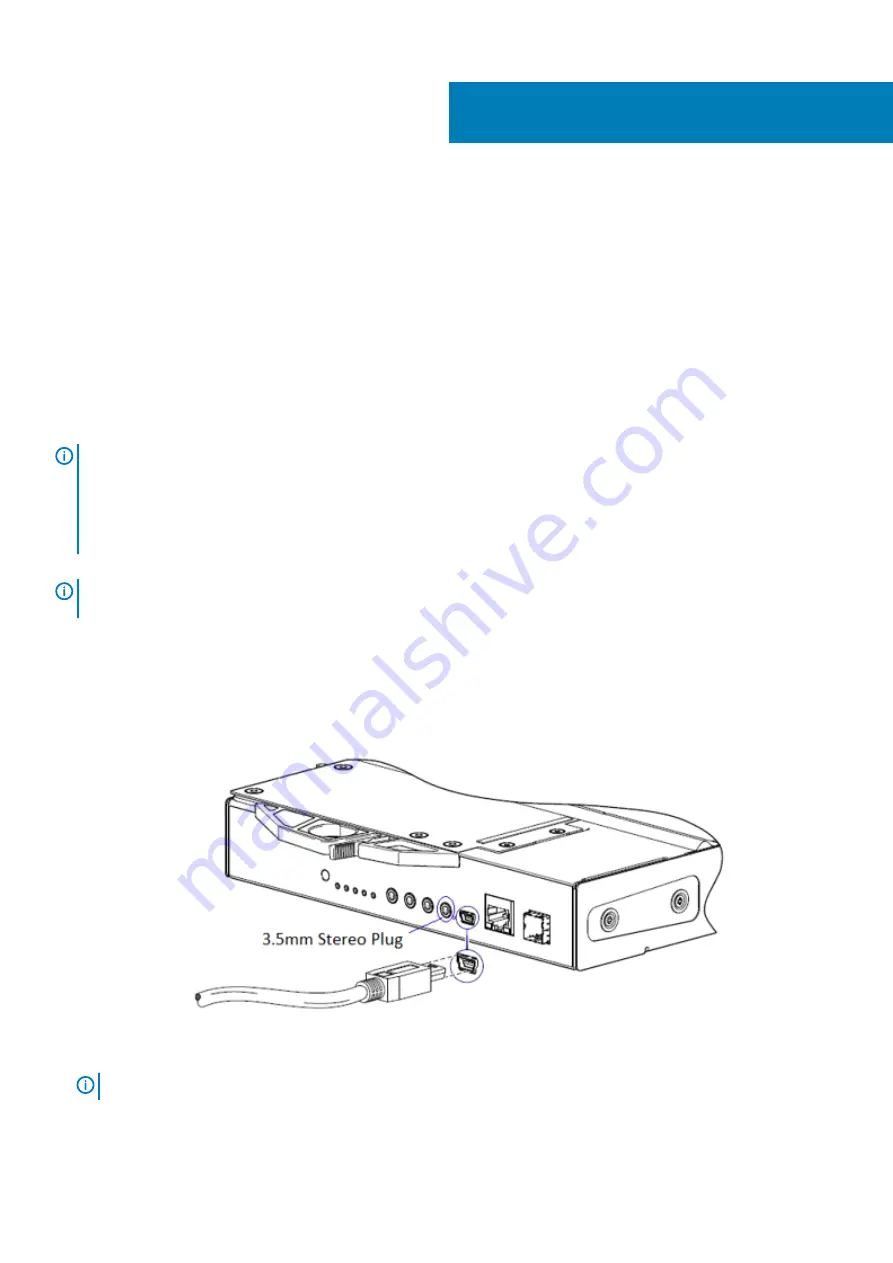
Setting network port IP addresses using the
CLI port and serial cable
You can manually change the default static IP values for each controller. You can also specify that IP values should be set automatically for
both controllers through communication with a Dynamic Host Configuration Protocol (DHCP) server.
Network ports on controller module A and controller module B are configured with the following default values:
•
Network port IP address
: 10.0.0.2 (controller A), 10.0.0.3 (controller B)
•
IP subnet mask
: 255.255.255.0
•
Gateway IP address
: 10.0.0.1
If the default IP addresses are not compatible with your network, you must set an IP address for each network port using the CLI. The CLI
enables you to access the system using the 3.5mm stereo plug CLI port or USB CLI port and terminal emulation software.
NOTE:
• If you are using the mini-USB CLI port and cable, see
• Windows customers should download and install the device driver as described in
, unless
they are using Windows 10 or Windows Server 2016 and later.
• Linux customers should prepare the USB port as described in
.
Use the CLI commands described in the following steps to set the IP address for the network port on each controller module:
NOTE:
When new IP addresses are set, you can change them as needed using the ME Storage Manager. Be sure to
change the IP address before changing the network configuration.
1. From your network administrator, obtain an IP address, subnet mask, and gateway address for controller A and another for controller
B.
2. Record the IP addresses so you can specify them whenever you manage the controllers using the ME Storage Manager or the CLI.
3. Connect the 3.5mm/DB9 serial cable from a computer with a serial port to the 3.5mm stereo plug CLI port on controller A.
Alternatively, connect a generic mini-USB cable (not included) from a computer to the USB CLI port on controller A .
The mini-USB connector plugs into the USB CLI port as shown in the following figure:
Figure 42. Connecting a USB cable to the CLI port
4. If you are using a mini-USB cable, enable the USB CLI port for communication:
NOTE:
Skip this step if you are using the 3.5mm/DB9 serial cable.
•
Unless they are using Windows 10 or Windows Server 2016 and later, download and install the USB device driver for the CLI port,
as described in
,
D
88
Setting network port IP addresses using the CLI port and serial cable


















